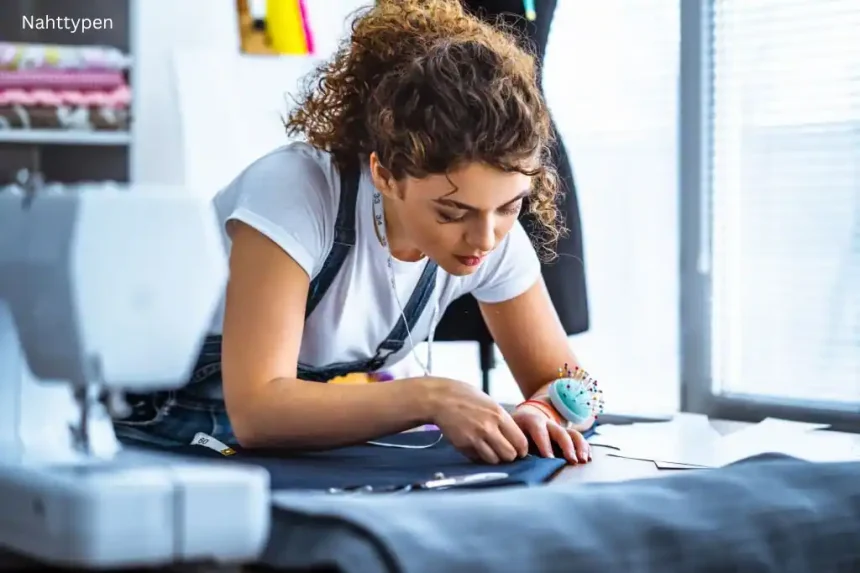Ever looked at your sewing machine and wondered what all those weird stitch symbols actually mean? You’re not alone! Welcome to the wonderful world of nahttypen — or stitch types. Whether you’re a newbie with thread still tangled in your fingers or a seasoned pro in the sewing game, understanding stitch types can be a total game changer.
Let’s unravel (pun intended) everything you need to know about nahttypen and how to use them effectively.
What Are Nahttypen?
The term nahttypen is German, and it simply means types of stitches. In sewing, stitches are the building blocks that hold everything together—literally. But not all stitches are created equal. Some are made for stretchy fabrics, some are decorative, and others are just there to get the job done.
Why Stitch Types Matter in Sewing
You might be thinking, “A stitch is a stitch, right?” Well, not quite. Choosing the right stitch type is like picking the right tool for a job.
Functionality and Fabric Compatibility
Different fabrics respond differently to certain stitches. A stretchy jersey will need a stitch that can move with it, while cotton can get away with a straight stitch.
Aesthetic and Design Purposes
Sometimes, you want your stitches to do more than just hold things together. Decorative stitches can elevate a simple design into something eye-catching and artsy.
Common Nahttypen (Stitch Types)
Let’s break down some of the most frequently used stitches and when you might want to use them.
Geradstich (Straight Stitch)
This is your bread-and-butter stitch. Straight, simple, and super strong.
-
Best for: Woven fabrics
-
Used in: Seams, topstitching, hemming
Zickzackstich (Zigzag Stitch)
Ah, the zigzag — great for stretch and preventing fabric fray.
-
Best for: Knit fabrics or edges
-
Used in: Buttonholes, finishing seams
Overlockstich (Overlock Stitch)
This one’s the multitasker. It trims, sews, and finishes the edge all in one go.
-
Best for: Finishing raw edges
-
Used in: Professional seams, stretchy fabrics
Blindstich (Blind Stitch)
Want a hem that looks invisible from the front? Say hello to the blind stitch.
-
Best for: Hemming trousers, skirts, and curtains
-
Used in: Professional invisible hems
Specialty Nahttypen Explained
Now let’s go a bit deeper into some specialty stitch types that are often overlooked.
Stretchstich (Stretch Stitch)
Made specifically for elastic materials, this stitch stretches as you move.
-
Best for: Sportswear, swimwear
-
Used in: Sewing Lycra, elastane
Dekorstich (Decorative Stitch)
These are the fancy ones — great for embellishing your designs.
-
Best for: Visible areas, craft projects
-
Used in: Pillows, children’s clothes
Kettenstich (Chain Stitch)
Looks like a chain on the backside, strong and slightly flexible.
-
Best for: Decorative use or seams under tension
-
Used in: Embroidery, denim
Choosing the Right Stitch Type
Not sure which stitch to go for? Here’s how to decide.
Based on Fabric Type
-
Cotton: Straight or zigzag
-
Jersey/Stretchy fabric: Stretch stitch or overlock
-
Delicate silk: Narrow zigzag or blind stitch
Based on Project Type
-
Basic clothing: Straight, zigzag
-
Home decor: Decorative stitches
-
Activewear: Overlock, stretch stitch
Tips for Mastering Nahttypen
Want your stitches to look as good as they hold? Here’s some real-talk advice.
Practice with Scraps
Before you go full steam on your actual project, always test the stitch on a scrap of the same fabric.
Adjusting Tension and Length
Your machine’s tension dial isn’t just there for decoration. Play around with it to avoid puckering or loose stitches.
Common Mistakes to Avoid
Let’s save you some headaches:
-
Using a straight stitch on stretch fabric (it’ll pop as soon as you wear it)
-
Ignoring the grain of fabric
-
Not changing needles based on fabric type
-
Forgetting to secure stitches at the beginning/end
Final Thoughts
Understanding nahttypen isn’t just for the pros or fashion school grads. It’s for anyone who wants to take their sewing to the next level—without the frustration of busted seams or messy finishes. It’s kinda like learning a new language, but for fabric. Once you get the hang of it, you’ll wonder how you ever sewed without knowing the difference between a stretch stitch and a decorative one.
So go ahead—explore your sewing machine’s stitch library like a curious traveler in a new land. You’ll be stitching with confidence in no time!
FAQs
1. What is the best stitch type for stretchy fabric?
The stretch stitch or a zigzag stitch works best for stretchy fabric because it moves with the material.
2. Can I use decorative stitches for structural seams?
Not usually. Decorative stitches are mainly for looks, not strength. Use straight or overlock for load-bearing seams.
3. How do I know which needle to use with different nahttypen?
Match the needle to the fabric, not just the stitch type. Use ballpoint needles for knits and sharp needles for wovens.
4. Is it okay to always use a zigzag stitch?
It’s versatile, but not always ideal. For example, zigzag isn’t great for visible topstitching on woven fabrics.
5. Why is my thread bunching underneath?
This usually happens due to incorrect tension, a dull needle, or poor threading. Always double-check your setup before sewing.







